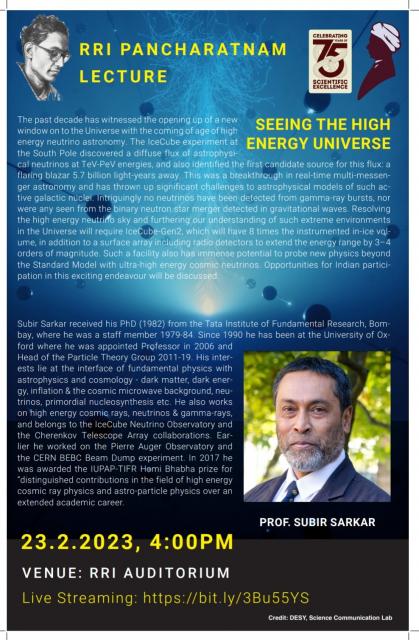Pancharatnam Lecture
Seeing the High Energy Universe
Speaker: Prof. Subir Sarkar (University of Oxford)
The past decade has witnessed the opening up of a new window on to the Universe with the coming of age of high-energy neutrino astronomy. The IceCube experiment at the South Pole discovered a diffuse flux of astrophysical neutrinos at TeV-PeV energies, and also identified the first candidate source for this flux: a flaring blazar 5.7 billion light-years away. This was a breakthrough in real-time multi-messenger astronomy and has thrown up significant challenges to astrophysical models of such active galactic nuclei. Intriguingly no neutrinos have been detected from gamma-ray bursts, nor were any seen from the binary neutron star merger detected in gravitational waves. Resolving the high energy neutrino sky and furthering our understanding of such extreme environments in the Universe will require IceCube-Gen2, which will have 8 times the instrumented in-ice volume, in addition to a surface array including radio detectors to extend the energy range by 3–4 orders of magnitude. Such a facility also has immense potential to probe new physics beyond the Standard Model with ultra-high energy cosmic neutrinos. Opportunities for Indian participation in this exciting endeavour will be discussed.
